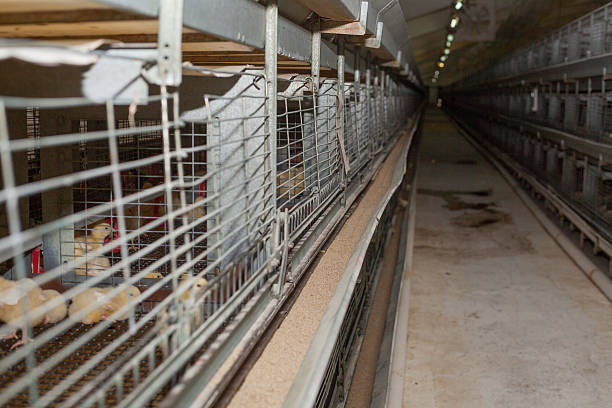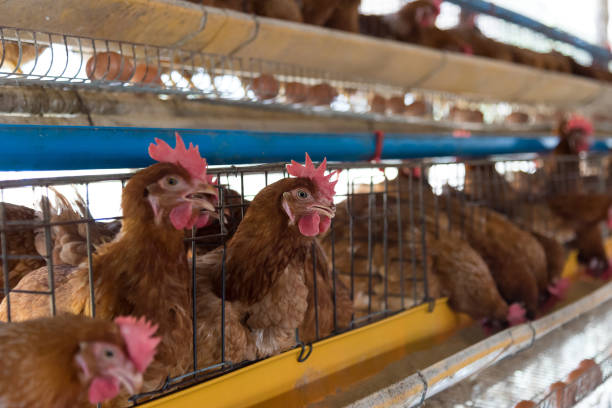Investing in Growth: Poultry Cage Systems for Thriving Commercial Farms
Investing in Growth: Poultry Cage Systems for Thriving Commercial Farms
The poultry industry is a dynamic and ever-evolving sector, consistently seeking advancements that enhance efficiency, productivity, and profitability. Among the most impactful innovations in poultry farming, the implementation of well-designed poultry cage systems stands out. These systems represent a significant investment in the future of commercial farms by optimizing space utilization, improving bird health, and streamlining management practices. This article delves into the multifaceted benefits of poultry cage systems and provides a comprehensive guide for farmers contemplating integrating them into their operations.
Understanding Poultry Cage Systems
Poultry cage systems, simply put, are specialized housing solutions designed to accommodate birds within individual or group compartments, often arranged in tiers. These systems are prevalent in both egg-laying and broiler production, though design and dimensions adapt to the specific needs of each type of bird. The primary goal of poultry cage systems is to provide a controlled environment that promotes optimal bird welfare and maximizes productivity.
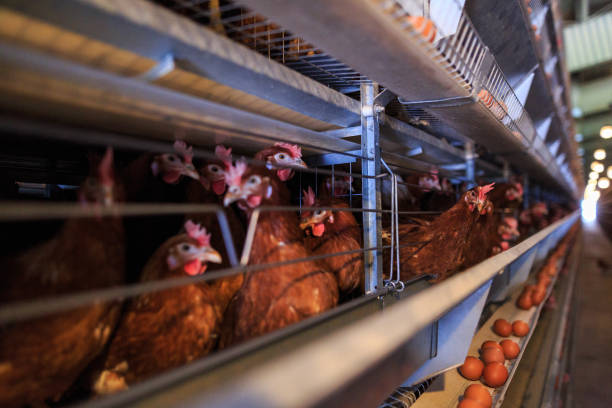
Types of Poultry Cage Systems
A variety of cage systems have emerged over time, each with its own set of advantages and drawbacks. Understanding the different types is critical for making an informed decision about which system is best suited for your farm.
Battery Cage System: This traditional system is characterized by small, individual cages, typically housing one or several hens. While battery cages enable high-density stocking, they have faced increasing scrutiny due to animal welfare concerns. They’re cost-effective upfront and simplify management, but restrictions are rising in many regions.
Enriched Cage System: Enriched cages represent an evolution of the battery cage, designed to meet higher welfare standards. These cages provide more space per bird and incorporate features such as perches, scratching areas, and nest boxes to encourage natural behaviors. While more expensive than battery cages, they allow the birds to engage in more of their natural behaviors and are more socially acceptable and viable in regions with stricter animal welfare legislation.
Layer Cage System: Designed specifically for laying hens, layer cage systems prioritize egg collection efficiency. These systems may include features such as automated egg collection belts, manure removal systems, and integrated feeding and watering mechanisms to keep the process efficient and simple for workers.
Broiler Cage System: Broiler cage systems are tailored to the rapid growth rate of meat chickens. These systems typically feature larger cages or pens to accommodate the birds’ increasing size and specialized flooring to minimize the risk of footpad dermatitis.
A-Frame Cage System: In an A-frame system type, two sets of cages are arranged to form the letter ‘A.’ Easy cleaning and maintenance are key here, plus better air circulation.
H-Frame Cage System: These are configured with cages stacked high, often in multiple tiers, in the shape of an H. The advantage is high stocking density, saving precious floor space.
Vertical or Tiered System: Imagine cages stacked several levels high. This maximized the use of vertical space, and it may include automated systems for feeding, watering, and egg collecting.
Advantages of Poultry Cage Systems
The integration of poultry cage systems brings a host of compelling benefits to commercial farms:
Enhanced Space Utilization: Cage systems enable higher bird densities compared to floor-based housing, maximizing the output from a given area and reducing land requirements. With cages stacked in layers, you can have more birds in the same space.
Improved Bird Health Management: Cages allow for greater control over the birds’ environment, including temperature, humidity, and ventilation. This reduces the risk of disease outbreaks and creates a more stable and comfortable environment.
Reduced Contact with Manure: Cage systems with integrated manure removal systems separate birds from their waste, minimizing the risk of ammonia buildup and the spread of pathogens. This contributes to better air quality and reduced disease incidence.
Easier Monitoring and Management: Cages facilitate individual bird monitoring, allowing farmers to quickly identify and address health issues or performance deficiencies. Regular inspections and treatments become easier to administer.
Streamlined Egg Collection: In layer operations, cage systems with automated egg collection belts significantly reduce labor requirements and minimize egg breakage during handling.
Optimized Feeding and Watering: Cage systems often incorporate automatic feeding and watering mechanisms, ensuring that birds receive a consistent and adequate supply of nutrients and hydration. Consistent and reliable access to food and water contributes to uniform growth and egg production.
Reduced Labor Costs: Automation in feeding, watering, manure removal, and egg collection reduces the overall labor requirements of the farm, leading to significant cost savings.
Factors to Consider When Selecting a Poultry Cage System
Choosing the appropriate poultry cage system is a crucial decision with long-term implications. Several factors should be carefully considered during the selection process:
Bird Type and Production Goals: The specific needs of the birds being raised (layers or broilers) and the desired production outcomes (egg quantity, meat quality) will significantly influence the choice of cage system.
Farm Size and Layout: The available space, building dimensions, and overall farm layout must be considered to ensure that the chosen system can be efficiently integrated and utilized.
Budget Constraints: Poultry cage systems vary considerably in price, so establishing a realistic budget is essential to narrowing down the options. The upfront investment should be weighed against the long-term benefits and potential return on investment.
Animal Welfare Regulations: It’s crucial to comply with all relevant animal welfare regulations and guidelines in your region. Some jurisdictions have specific requirements regarding cage size, enrichment features, and stocking densities.
Automation and Technology: Consider the level of automation desired for feeding, watering, egg collection, and manure removal. Automated systems can significantly reduce labor costs but may require a higher initial investment.
Durability and Maintenance: Choose a cage system constructed from high-quality materials that are resistant to corrosion and wear. Consider the ease of maintenance and the availability of replacement parts.
Ventilation and Climate Control: Ensure that the cage system is compatible with the farm’s ventilation and climate control systems. Proper air circulation and temperature regulation are essential for bird health and productivity.
Ease of Cleaning and Disinfection: A cage system that is easy to clean and disinfect helps to minimize the risk of disease outbreaks and maintain a hygienic environment for the birds.
Financial Considerations and ROI
Investing in poultry cage systems represents a significant capital expenditure. Farmers should carefully evaluate the financial implications and potential return on investment (ROI) before making a decision.
Initial Investment Costs: Consider the cost of the cages themselves, as well as the costs associated with installation, modifications to existing buildings, and integration with other farm systems.
Operating Costs: Factor in ongoing operating costs such as electricity, water, feed, and labor. Automation can help to reduce some of these costs, but it’s important to have a clear understanding of the overall financial impact.
Increased Productivity: Poultry cage systems can significantly increase bird productivity through optimized space utilization, improved health management, and streamlined feeding and watering.
Reduced Mortality Rates: By providing a more controlled and hygienic environment, cage systems can help to reduce bird mortality rates, leading to higher overall output.
Improved Feed Conversion Ratio: Cages can help improve feed conversion ratios by reducing feed wastage and enabling more precise feed management.
Higher Egg Quality: In layer operations, cage systems with automated egg collection can help to reduce egg breakage and improve the overall quality of the eggs.
Labor Savings: Automation in feeding, watering, egg collection, and manure removal can result in significant labor savings, reducing the overall labor costs of the farm.
Long-Term Profitability: By increasing productivity, reducing costs, and improving bird health, poultry cage systems can contribute to long-term profitability and sustainability of commercial farms.
Maintenance and Best Practices
To maximize the benefits and longevity of a poultry cage system, regular maintenance and adherence to best practices are essential:
Regular Cleaning and Disinfection: Clean and disinfect cages regularly to prevent the buildup of pathogens and maintain a hygienic environment. It’s best to establish a cleaning schedule that can be realistically maintained.
Proper Ventilation and Climate Control: Ensure that the ventilation and climate control systems are functioning properly to maintain optimal temperature and humidity levels within the cages.
Regular Inspection and Repair: Inspect cages regularly for any signs of damage or wear and tear. Promptly repair any issues to prevent injuries to the birds and maintain the structural integrity of the system.
Effective Manure Management: Implement an effective manure management system to remove waste promptly and minimize the risk of ammonia buildup.
Appropriate Stocking Densities: Adhere to recommended stocking densities to prevent overcrowding and ensure that birds have sufficient space to move and express natural behaviors.
Proper Lighting Management: Implement a lighting program that is appropriate for the type of bird being raised and the desired production outcomes.
Biosecurity Measures: Implement strict biosecurity measures to prevent the introduction and spread of disease. This includes controlling access to the farm, disinfecting equipment and vehicles, and implementing a robust pest control program.
Employee Training: Provide comprehensive training to employees on the proper operation and maintenance of the cage system, as well as best practices for bird handling and welfare.
The Future of Poultry Cage Systems
The poultry industry is constantly evolving, and poultry cage systems are no exception. Ongoing research and development efforts are focused on creating more sustainable, welfare-friendly, and efficient systems. Future trends include:
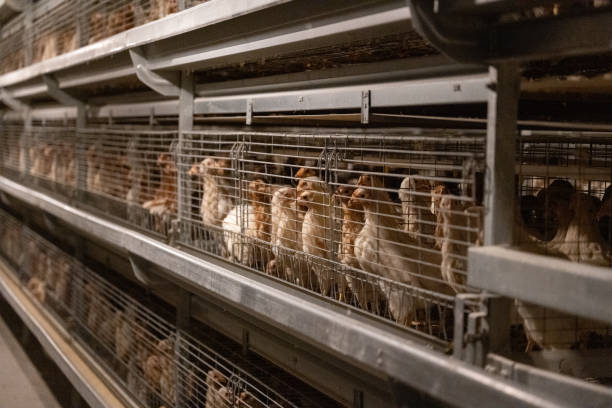
Enhanced Enrichment Features: Increased focus on incorporating enrichment features into cage designs to promote natural behaviors and improve bird welfare.
Precision Farming Technologies: Integration of precision farming technologies such as sensors, data analytics, and automation to optimize bird management and resource utilization.
Improved Manure Management Systems: Development of more efficient and sustainable manure management systems that minimize environmental impact.
Focus on Sustainability: Continued emphasis on sustainability, including reducing energy consumption, minimizing water usage, and utilizing environmentally friendly materials.
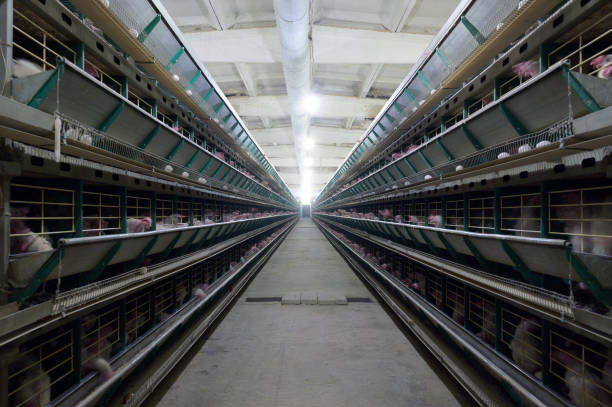
Poultry cage systems represent a strategic investment in the future of commercial farms. By optimizing space utilization, improving bird health, and streamlining management practices, these systems can significantly enhance productivity and profitability. While selecting a cage system requires careful consideration of various factors, an informed decision can lead to long-term success in the dynamic and competitive poultry industry. As technology advances and consumer preferences evolve, poultry cage systems will continue to adapt and innovate, playing a crucial role in shaping the future of poultry farming. Farmers considering adopting these systems should prioritize animal welfare, environmental sustainability, and long-term profitability to ensure a thriving and responsible operation.




